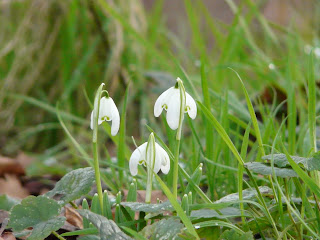Beeches Pit, West Stow, Suffolk
"What task could be more agreeable than to tell of the benefits conferred on us by our ancestors, so that you may get to know the achievements of those from whom you have received both the basis of your beliefs, and the inspiration to conduct your life properly?".
William of Malmesbury, c.AD 1125
A short walk from the Icknield Way is the site of 'Beeches Pit'.
"Beeches Pit is an old brickpit with an interesting history. It is the site where evidence for the earliest use of fire in Britain has been found, along with Palaeolithic flint tools. It dates back some 400,000 years to the Hoxnian interglacial period. The site is a designated Site of Special Scientific Interest (SSSI) for this reason, and is the subject of ongoing research."
Source:- http://www.breakingnewground.org.uk/earthheritagetrail/beeches-pit/
"Beeches Pit was first noticed by SBJ Skertchly in the 19th century. The local bedrock is Cretaceous Chalk overlain by a thin layer of chalky glacial till dating from the Anglian ice age. Overlying this, he found about 3.7 m (12 ft) of “loams with carbonaceous seams” containing fossil shells, and he recorded flint tools and mammal bones. Researchers in the 1970s investigated an outcrop of tufa, a chalky sediment deposited around springs. They found it contained a remarkable assemblage of fossil molluscs that was typical of the Hoxnian interglacial......... Further investigations in the 1990s showed that there was a water body here, with swampy areas where yellowish-brown clays and dark organic-rich muds had accumulated, and also the springs giving rise to the tufa deposits. Local wildlife included bison, deer, rhinoceros, frog and vole."
"The excavations provided fascinating detail about early human occupation at this site during the Hoxnian. They found evidence that people came here on repeated occasions to camp. Dark, carbon-rich patches indicated hearth sites at several levels in the geological sequence – the earliest evidence for fire use in Britain. Knapped flint tools of the Acheulean industry were scattered around these patches, some showing signs of burning. Some cores and flakes could be refitted together, showing that knapping took place on site. Beeches Pit is a valuable window into the world of our ancestors, probably Homo heidelbergensis, a species ancestral to ourselves and the Neanderthals" .
Another smaller brick pit on the Icknield Way .....
I told Pixie not to bark at the horses as they are vegetarians....
The Icknield Way.......
Icklingham, just down the road from Beeches Pit .....
The lovely All Saints church....
Pilgrim's path....













































